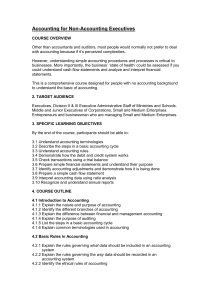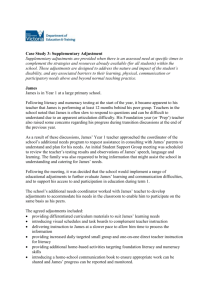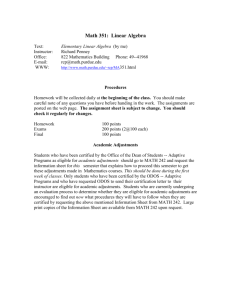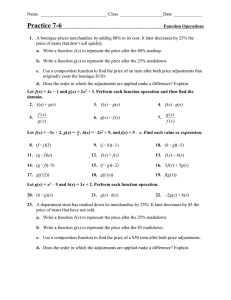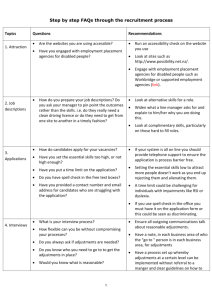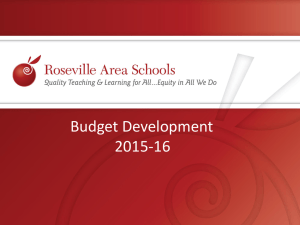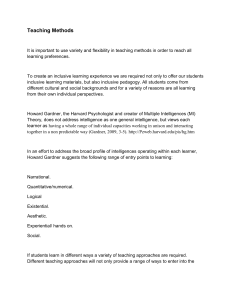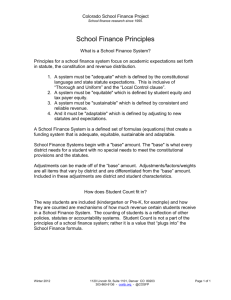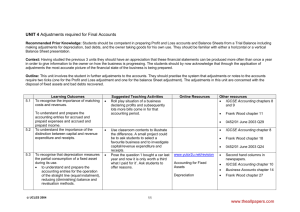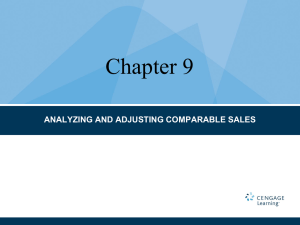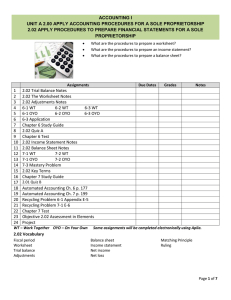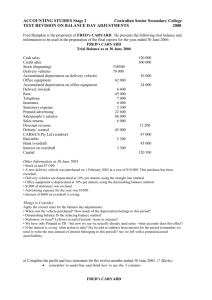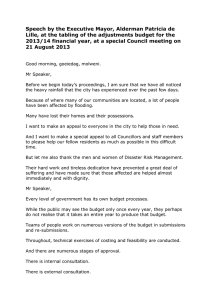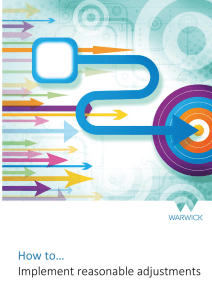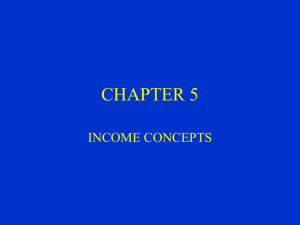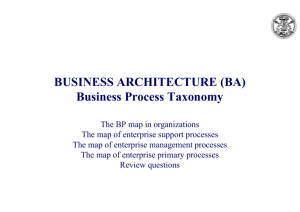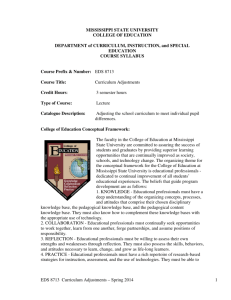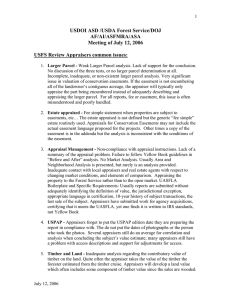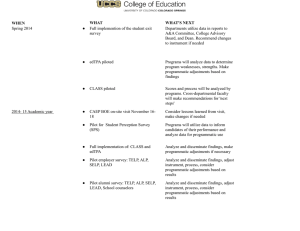Accounting for Non-Accounting Executives
advertisement
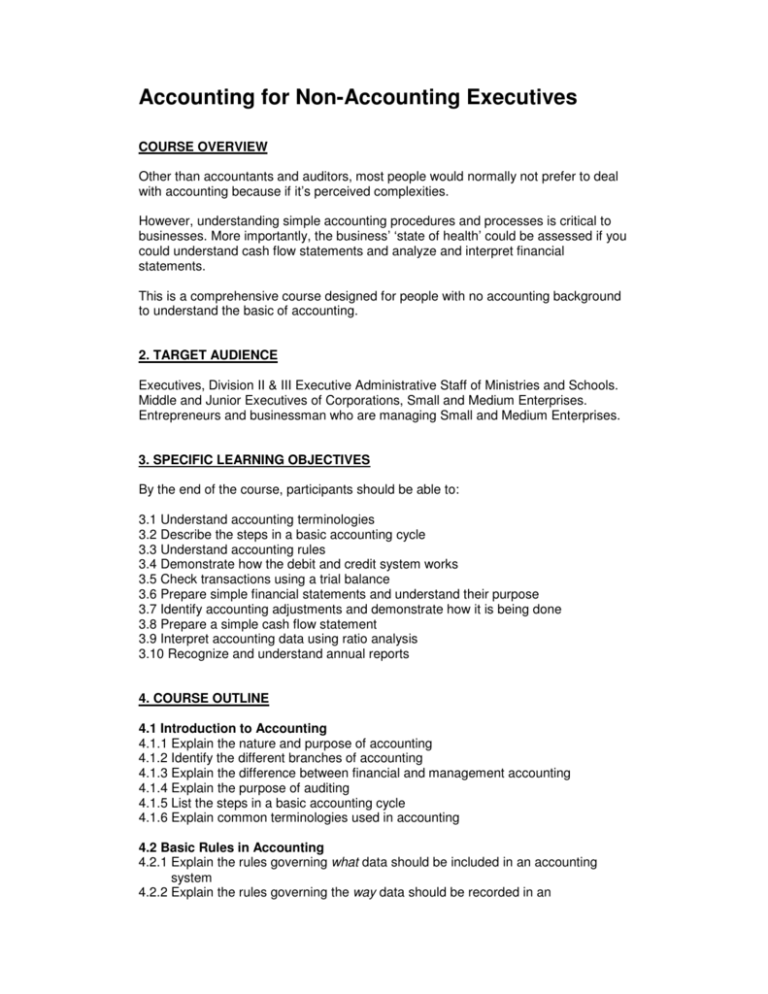
Accounting for Non-Accounting Executives COURSE OVERVIEW Other than accountants and auditors, most people would normally not prefer to deal with accounting because if it’s perceived complexities. However, understanding simple accounting procedures and processes is critical to businesses. More importantly, the business’ ‘state of health’ could be assessed if you could understand cash flow statements and analyze and interpret financial statements. This is a comprehensive course designed for people with no accounting background to understand the basic of accounting. 2. TARGET AUDIENCE Executives, Division II & III Executive Administrative Staff of Ministries and Schools. Middle and Junior Executives of Corporations, Small and Medium Enterprises. Entrepreneurs and businessman who are managing Small and Medium Enterprises. 3. SPECIFIC LEARNING OBJECTIVES By the end of the course, participants should be able to: 3.1 Understand accounting terminologies 3.2 Describe the steps in a basic accounting cycle 3.3 Understand accounting rules 3.4 Demonstrate how the debit and credit system works 3.5 Check transactions using a trial balance 3.6 Prepare simple financial statements and understand their purpose 3.7 Identify accounting adjustments and demonstrate how it is being done 3.8 Prepare a simple cash flow statement 3.9 Interpret accounting data using ratio analysis 3.10 Recognize and understand annual reports 4. COURSE OUTLINE 4.1 Introduction to Accounting 4.1.1 Explain the nature and purpose of accounting 4.1.2 Identify the different branches of accounting 4.1.3 Explain the difference between financial and management accounting 4.1.4 Explain the purpose of auditing 4.1.5 List the steps in a basic accounting cycle 4.1.6 Explain common terminologies used in accounting 4.2 Basic Rules in Accounting 4.2.1 Explain the rules governing what data should be included in an accounting system 4.2.2 Explain the rules governing the way data should be recorded in an accounting system 4.2.2 Identify the ethical rules of accounting 4.3 Recording Data 4.3.1 Identify the common types of accounts used to record transactions 4.3.2 Explain how the debit and credit system work 4.3.2 Write up simple ledger accounts 4.3.3 Describe how to check transactions using a trial balance 4.3.4 Explain the common errors affecting the balance of the trial balance 4.4 Basic Financial Accounts 4.4.1 Explain the difference between ‘cash’ and ‘profit’ 4.4.2 Explain the purpose of profit and loss statements and balance sheets 4.4.3 Prepare a profit and loss statement and a balance sheet using a trial balance 4.5 Accounting for Adjustments 4.5.1 Identify the four main types of year-end adjustments 4.5.2 Demonstrate how adjustments are made for ‘stocks’ 4.5.3 Demonstrate how depreciation is done using the different types of Depreciation methods 4.5.4 Demonstrate how adjustments are made for accruals and prepayments 4.5.5 Demonstrate how adjustments are made for bad debts and doubtful debts 4.5.6 Prepare a profit and loss, balance sheet using a trial balance and make the necessary adjustments 4.6 Financial Performance 4.6.1 Understand Cash Flow Statements 4.6.1.1 Distinguish between profitability and liquidity 4.6.1.2 Explain the purpose of cash flow statements 4.6.1.3 Explain the difference between the direct and indirect methods in presenting cash flow information 4.6.1.4 Prepare a simple cash flow statement 4.6.2 Interpretation of Accounting Data 4.6.2.1 Identify the various techniques of analyzing accounting data 4.6.2.2 Explain the usefulness and importance of ratio analysis 4.6.2.3 Identify and explain the common types of accounting ratios 4.6.2.4 Calculate accounting ratios and interpret the result 4.7 Financial Reporting 4.7.1 Identify the users groups of financial information 4.7.2 Identify the main authorities in Singapore for company disclosure of information 4.7.3 Identify the main sections of an annual report 4.7.4 Identify and locate the major items contained in a group profit and loss account, a statement of total recognized gains and losses, a group balance sheet, a group cash flow and notes to the accounts 4.7.5 Trace the notes to the accounts back to the main financial statements 4.8 Case Study – Apply concepts and methods learned 5. TRAINING METHODOLOGY 5.1 Documentation Review 5.2 Presentation 5.3 Activities, Exercises and Case Studies 6. COURSE DURATION 3 days COURSE FEES S$700 TEAM DISCOUNT (For organizations sending 3 or more participants) 15% EARLY BIRD DISCOUNT 10% for registration 60 days before the commencement of the course REGISTRATION DEADLINE 1 week before the commencement of the course
